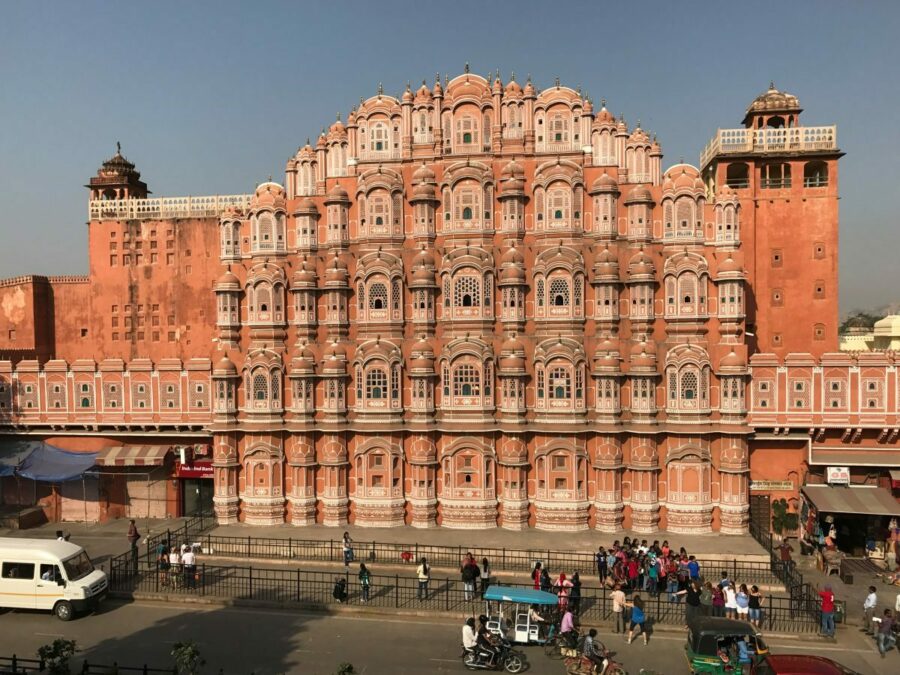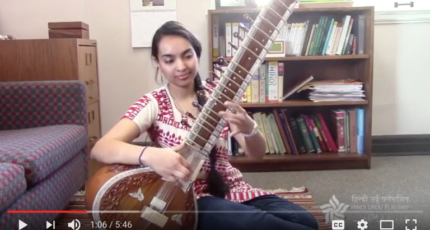Why Learn Hindi and Urdu
The Languages
Hindi is the official language of the Republic of India and the most widely spoken language in South Asia. Urdu is the national language of Pakistan, one of the official languages of India, and a tremendously important strategic language in South Asia. With a common vocabulary and grammar, in their basic form, Hindi and Urdu are generally considered to be the same language written in two different scripts.
India’s Global Influence
India is a rapidly emerging market—the sixth-largest in the world—and the world’s fastest growing economy. Projected to overtake China as the world’s most populous nation by 2030, 600 million of India’s population of 1.25 billion are now in the middle class (doubling that figure from 2004).
India is also becoming a country of innovation and entrepreneurship. In 2016, there were 19,400 technology startups in India, with almost one-fourth launched in 2015 alone. Given its size, demographic status, skilled labor, market size, and rate of growth, no one can afford to ignore India as a global influencer.

When English Isn’t Enough
Visitors to metropolitan areas of South Asia may all too easily be misled into thinking that English is a universal language of Indian business: The reality is that Hindi and Urdu hold a vital place in the South Asian business world, and global professionals need a high level of proficiency in these languages when working and studying in India.
While English is spoken by approximately ten percent of the population, Hindi is spoken by 550 million Indians—making it the language in which many Indians prefer to conduct business.

Career Opportunities
Professional proficiency in Hindi and Urdu is a major asset for those seeking a career in international business. Through business-process outsourcing, information technology, telecoms, and manufacturing, India has created an economic boom that rivals the rise of China. Corporations such as Reliance, Microsoft, Dell, Tata, and Wipro are either of Indian origin or have developed major ties to the subcontinent over the past decade.
The political focus of the 21st century is increasingly centering on South Asia. With conflict and reconstruction in Afghanistan, political change in Pakistan, and the emergence of India as a global superpower, knowledge of the region’s key languages—Urdu and Hindi—is a crucial asset for careers with political organizations such as the United Nations or the U.S. Government.
South Asia is also home to more nongovernmental organizations than any other region in the world. A mastery of Hindi and Urdu is essential for everyday work in many of these organizations. From large-scale international organizations such as Doctors Without Borders to village-operated micro-credit unions, opportunities abound for Hindi and Urdu speakers.

Culture & Literature
Home to some of the world’s largest film, fashion, media, and music industries, South Asia exerts an increasingly dominant influence on global culture. This region has literary, religious, and aesthetic traditions stretching back thousands of years, many of them still proving highly influential in the mechanics of contemporary South Asian society and in the large and influential South Asian diaspora worldwide. Studying Hindi and Urdu yields an unparalleled cultural education and a key to understanding major cultural currents in the world today.
Related Languages
Because Hindi and Urdu have virtually no grammatical concepts that do not exist in English, anglophone students are able to employ the same concepts they use in English in Hindi and Urdu without difficulty. So if you’re not keen on learning a whole new system, in this instance, you’re already part-way there!
Hindi and Urdu also provide a gateway to learning a wide variety of related South Asian scripts and languages with which they share similarities. The Devanagari script of Hindi is employed to write languages including Nepali, Marathi, and Sanskrit, and it is closely related to the scripts used to write Punjabi, Bengali, Gujarati, and Oriya, among others. Likewise, the Nastaliq script of Urdu is a modified form of the Persian script, which in turn is a modified form of the Arabic script. It is also used to write Kashmiri, Punjabi (in Pakistan), occasionally Persian, and Pashto, among other languages.
Story: Why It's Important to Teach Hindi to Young Heritage Speakers in the U.S.
A Unique Skill
Knowing any language is a wonderful asset, but skills in less commonly taught languages such as Hindi and Urdu are particularly prized. As noted above, U.S. and international businesses, government agencies, and NGOs engaged in India and the region where these languages are widely spoken are actively seeking to hire proficient speakers. These skills remain nonetheless extremely rare among Americans, making the demand all the greater. Learning Hindi and Urdu can set you apart from the crowd, giving you a clear advantage over other job candidates.
Adapted from Boston University, World Languages & Literatures, and The University of Texas at Austin, Hindi Urdu Flagship
Scholarships and Grants
Bose Program for U.S. Scholars
The Program provides a stipend, airfare, and other resources so that U.S. undergraduate and graduate students in STEM (Science, Technology, Engineering & Math) fields may conduct research at top Indian universities.
Critical Language Scholarship (CLS) Program – Hindi and Urdu
Run by the U.S. Department of State, the CLS Program is a fully funded overseas summer immersion program promoting the study of critical languages, including both Hindi and Urdu.
National Security Language Initiative for Youth (NSLI-Y) Program (+ high school)
Sponsored by the U.S. Department of State, the NSLI-Y program offers high-school students and recent graduates merit-based scholarships for overseas immersion opportunities to study less commonly taught languages, including Hindi.
Looking for a Hindi or Urdu Program?
While initially developed to report language enrollment figures, the MLA database provides a comprehensive listing of postsecondary language programs, allowing you to refine your results by language, geographic area, and/or type of institution. The data is based on MLA’s 2013 survey.
To Get Started:
- Select your language(s), up to eight
- Narrow your search, as desired, and click “search now”
- Expand your findings to reveal specific schools offering programs in your language by clicking on the small triangles on your results page




